
Your study is about ‘targeted dream incubation’. What exactly is that?
Adam Haar Horowitz (AH) In short, the idea is that you could target specific content to be incubated in dreams, which is a kind of cheap explanation, but there’s been a long history of trying to have subjects dream of something specific. Partially, the interest is clinical – we want to avoid nightmares, for example. Partially, it’s therapeutic – we want people to help work through the more emotional side of some content. And partially it’s memory-based – if you dream about something, you’re going to remember it better when you wake up. So, there are all kinds of reasons to have someone dream about something specific, but it’s failed consistently for the past hundred years. What people have tried to do, is show people some content while they’re awake, and then wake them up four hours later in a REM cycle and see if they’re dreaming about the thing they saw when they were awake.
The basic thing that our team did differently was to target this funny period, which is variably called ‘covert REM’ or ‘Stage 1 sleep’, that’s right at the onset of sleep. It’s a period that looks like REM sleep on EEG, and experientially it’s also like REM sleep – you have dreams – but you’re not fully unconscious; you don’t have a sensory cut off from the world and can still hear. Because we targeted that early period, it worked a hell of a lot better than past attempts at targeted incubation.
Tell us about the wearable device, Dormio, that you designed for use in your experiments.
Esta historia es de la edición January /February 2021 de Very Interesting.
Comience su prueba gratuita de Magzter GOLD de 7 días para acceder a miles de historias premium seleccionadas y a más de 9,000 revistas y periódicos.
Ya eres suscriptor ? Conectar
Esta historia es de la edición January /February 2021 de Very Interesting.
Comience su prueba gratuita de Magzter GOLD de 7 días para acceder a miles de historias premium seleccionadas y a más de 9,000 revistas y periódicos.
Ya eres suscriptor? Conectar
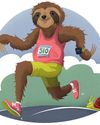
TAKE IT SLOW
Slow running is a fitness trend with some hard and fast science behind it
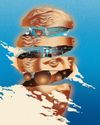
Physics, AI and music share a common thread. You just have to know where to look
Studying science can lead you in many directions and open doors to unexpected possibilities along the way
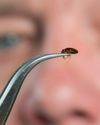
BED BUGS VS THE WORLD
When bloodthirsty bed bugs made headlines for infesting Paris Fashion Week in 2023, it shone a spotlight on a problem that's been making experts itch for decades: the arms race going on between bed bugs and humans
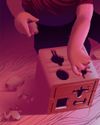
Kids are the key to understanding obesity. But we need more of their genes...
We can unravel the role that bodyweight plays in disease, but we need a bigger, more diverse, sample of genetic material to do so

COVID inquiry: What did we learn and what can we do better in future pandemics?
Masks, social distancing, lockdowns... how effective was the UK's response to the COVID-19 pandemic?
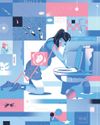
One hormone could be the key that unlocks a cure for morning sickness
The nausea and vomiting that, in extreme cases, can endanger mothers and babies might soon be just a memory

THE WORLD'S WEIRDEST CREATURES
Under the sea and upon the land, some animals look - to us - pretty strange...
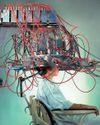
WHEN MIND AND MACHINE COLLIDE
First, Elon Musk wanted to make electric cars ubiquitous, then he wanted to make space exploration a private enterprise. Now, with Neuralink, his newest venture, Musk hopes to merge humans and artificial intelligence. Turns out, it might not be such a crazy idea...
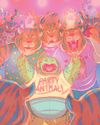
COME OUT OF YOUR SHELL
Social anxiety is more than just being shy. It's a phobia born out of our evolutionary past. But that raises a puzzling question: why do so many of us fear human interaction when we're supposed to be the most sociable species on the planet?

SPACE ODDITIES
Take a tour of the weirdest spots in the universe, where the 'normal' rules don't apply. Places that squeeze time, blow bubbles and even rain glass... sideways